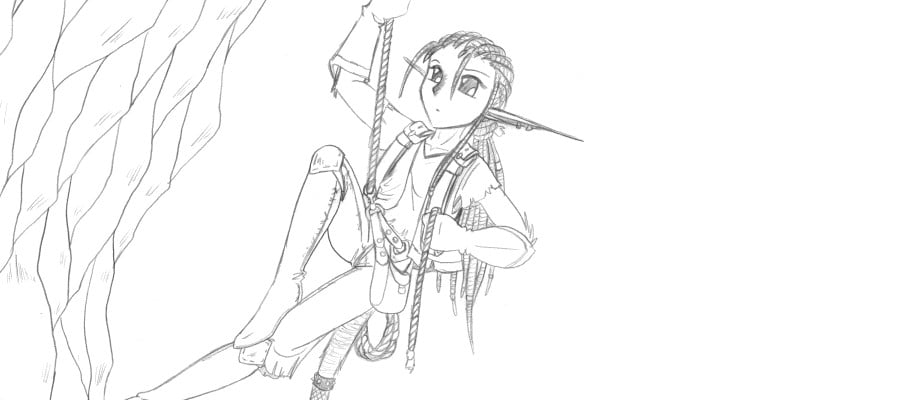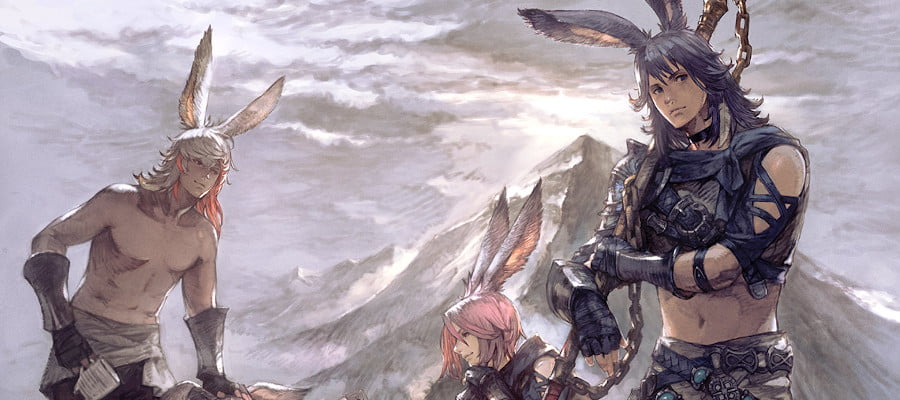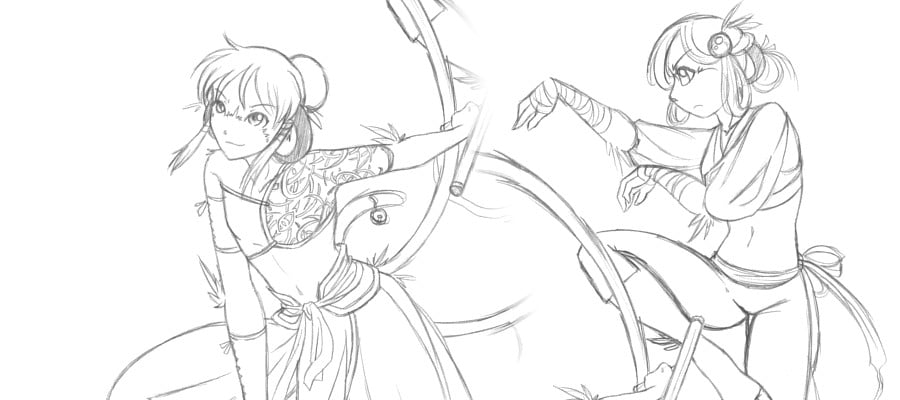This is part three, effectively, of a long form examination of the political coalition of the Beastfolk of Cobrin’Seil – which is basically ‘how furry can I be in this setting, conveniently?’ The answer, broadly, is ‘pretty furry,’ with things like werewolves and werebears available, but also, this is where you get rats, monkeys, dinosaurs (I made mistakes googling ‘anthro raptors’ for this article) and of course, the vitally important presence of bnuy.
The Rahbe
Telepathic rat people recovering a lost diasporia
Rahbe Heritage Traits
Average Height: 91 – 137cm (3’6″ – 4’6″)
Average Weight: 27 – 36kg (60 – 80lb.)
Ability Scores: +2 Wisdom, +2 Dexterity or Intelligence
Size: Small
Speed: 7 squares
Vision: Normal
Languages: Common, Bestial, plus any one
Skill Bonuses: +2 History
Memory of the Weave: You gain a +2 to all Knowledge skills, and can make checks with Knowledge skills untrained.
Psionic Endowment: You gain one power point, which you can use to augment psionic powers and feats with the augmentable keyword, as if you had the psionic augmentation class feature. You are considered to have the psionic augmentation class feature for the sake of feats, paragon paths and other requirements.
Threads of Fate: You have the threads of fate heritage power.
| Threads of Fate | Rahbe Heritage Power |
|---|---|
| In a brief flash of psychic insight, you see the ideal point to strike down your foe. | |
| Encounter ✦ Psionic, Augmentable | |
| Free Action Personal | |
| Trigger: You would make an attack roll. | |
| Effect: You make the attack roll twice and choose one. If both attack rolls hit, you do not expend this power. | |
| Augment 1: | |
| Effect: You make the attack roll twice and choose one. If both attack rolls hit, you do not expend this power. After the attack is resolved, you can shift a number of squares equal to your wisdom modifier as a free action. | |
A Rahbe (pronounced rah-bay) is a humanoid that resembles a halfling with a host of rat-evoking traits, of an average height of 80 cm to 100 cm. It’s very easy for the unfamiliar people to see a Rahbe and assume, superficially, that they’re just a halfling with some odd traits, like long, elfen ears, claw-tipped fingers, and many have one or more ratlike tails out the back of their head, mixed in with their hair. Rahbe feet also demonstrate a distinct difference to fully-flat plantigrade feet, with a springy arch to them that suggests an immediate leap into action.
The Rahbe, originating out of a hidden, underground city of Teq-Jelt, a city that was built well before the Eresh holy city Olifar was built on top of it. These two cities coexisted for a century before Olifar discovered the psionic ratfolk living underneath them, and since this was during the period of the Eresh Protectorates when psionics were regarded as a heresy, this went really badly, and the ensuing genocide was both part of the foundation of the Chardunist order, and the start of the Rahbe diaspora. It was almost two hundred years before the Eresh Protectorate reckoned with the war crime and tried to make reparations.
It’s a big important event, particularly in how grappling with their origin being a literal genocide against a completely innocent culture wound up subverting the Chardunist order, who slipped the Church’s leash and view the protection of downtrodden people as their most important mission now. Of course, that’s not a lot of comfort for the Rahbe, who were distributed through other cultures until they could find places in the world that weren’t directly under the control of the Eresh Protectorate, which is where most Rahbe settlements came from subsequently. With the restitution of Teq-Jelt, there was a lot of repatriation, but now the Rahbe are distributed throughout the world.
Rahbe, as a culture, are hard to understand to non-Rahbe, particularly because of their different suite of senses and communication. Rahbe language isn’t very complex, for example, because Rahbe are telepathic and more likely to communicate with one another in sorts of local group chats. Similarly, Rahbe don’t like being alone, and they don’t have the same concerns about privacy that most other cultures do. Rahbe feel very comfortable sharing space and information with one another.
Rahbe also describe the idea of ‘fading’ – the idea that it’s entirely possible for a Rahbe to be surrounded by people and information and conversation and not notice any of it because they’re focused on something. This pattern of behaviour isn’t seen as rude or complicated, but also, Rahbe are almost always going to ignore someone faded, rather than try and shake them out of it. When dealing with non-Rahbe then, who don’t communicate the same level of sophisticated information, someone who might be focusing even modestly on something might be seen as a Rahbe as ‘do not disturb’ levels of attenuated.
Also, Rahbe have really fine hearing – their earbones extend down into their necks, and the tail at the base of their skull also plays a part into their multi-layered listening and balance system. Given that they don’t need to talk at all to communicate, this sophisticated hearing system means that Rahbe are often absorbing a lot of detail about their surroundings – it’s not uncommon for Rahbe bazaars in Teq-Jelt to be entirely silent of voices, as all the communication is telepathic, and the sound of people’s movement and objects being transferred means that almost all the Rahbe have an awareness of all the bodies around them, which means there’s almost no foot-traffic jams. This creates a really weird phenomenon, which plays out for most Rahbe’s perception to others. Rahbe talk and love to talk, but Rahbe with a purpose tend to use telepathic communication because it’s faster. Basically, imagine a shopping trip where everyone knows exactly what they want is and can map their route to it without bumping into anyone.
Because of how much they resemble ‘weird halflings,’ and their reduced presence,it’s really common for most people who know Rahbe to not realise they know a Rahbe and see them as a non-distinct cultural group. Like ‘oh, that’s a halfling weirdo.’ The Rahbe aren’t halflings – they’re not even related, as Halflings are a variety of Human, and Humans are evolved from primates, and Rahbe evolved from rats, but the visual similarities are easy to miss under the category of ‘being about the right size.’
Rahbe who adventure often refer to their ‘pledge,’ a boast or oath that they expect to live up to. This is a description of how they want to be perceived (and plays into Rahbe relationship to language); a phrase, shriven from thoughts, has to be very clear but also very ambitious.
HOW FURRY? Almost completely non-furry. They look like little humans with ratlike traits like big ears and a tail on their head.
The Tjosen
Star-crafting rabbit-folk, outrunning an apocalypse
Tjosen Heritage Traits
Average Height: 152-182 cm (5′ – 6′)
Average Weight: 58– 81 kg (130 – 180 lbs)
Ability Scores: +2 Charisma and +2 Strength or Constitution
Size: Medium
Speed: 7 squares
Vision: Normal
Languages: Common, Bestial, plus any one
Skill Bonuses: +2 Athletics, +2 Endurance.
Wit’s Ends: You gain a +1 racial bonus to Reflex.
Natural Athlete: You gain training in Athletics.
Natural Jumper: You are always considered to have a running start when jumping.
Stars Align: You have the Stars Align heritage power.
| Stars Align | Tjosen Heritage Power |
|---|---|
| Plant your feet and make your moment. | |
| Encounter | |
| Move Action Personal | |
| Effect: The next attack you make this turn deals maximum damage to one of its targets. | |
A Tjosen (pronounced Tyo-zen) is a humanoid with some rabbit traits, particularly large floppy ears atop their head and a penchant for jumping. Tjosen ears are extremely obvious and expressive, but they also have small tails at the base of their spines, which serve almost no communicative purpose, but do represent a challenge for clothing design.
Typically found in the ruins of older civilisations and collapsed cultures, the Tjosen are a people known for their association with stars and the moon. Divine magic isn’t unheard of in their spaces, but they’re much more interested in arcane magic and its relationship to itself than they are in other sources of magic. The typical Tjosen view of arcane magic is as a single type of energy that can be nearly-universally manipulated, and therefore shared, as long as people can share complex information about what represents their unique variaiton. This unique variation, a sort of individualised signature for each caster, is usually based on a sophisticated design drawn in the sky based on their own developing disciplines. Most Tjosen refer to this as their ‘constellation.’
This vision of the stars and space is part of why their culture is interested in examining history through magical aftermaths; the Tjosen express interest in the historical artifacts of old empires because they know that the history on this world has been damaged, but the stars – at least hypothetically – are a lot harder for things on this mere dirt to affect them.
Tjosen, for all that they live in remote locations and ruins of old empires, are fascinated by cities and travel in more industrialised spaces. They think of these things as exciting and interconnected, and find the ability to have common experiences with people from wildly different lives to them as fundamentally interesting. Also, turns out, most cultures think that Tjosen are pretty hot, so that makes it easier for them to fit into other communities.
HOW FURRY? Middlingly furry. Think like the Viera from Final Fantasy – they have animal ears, and their body and behaviour mirror the way animals are as a vibe, but they don’t (usually) have body fuzz, and their skin and hair are distinct, contrasted body parts.
The Dragonborn
I’ve written about the Dragonborn at length elsewhere, where I’d reimagined them as a isolated island city of biologically diverse dinosaur people, so just linking to them here…
HOW FURRY? The term, technically, is scaley. Anthropomorphic Dinosaurs and lizards.
The Dio Baragh
And same about the Dio Baragh, who are a mechanical reconception of Dwarves that got themselves ejected from the Fae Realms for rabble rousing.
HOW FURRY? Middlingly furry. They’re a lot more human than they are anthro goats, but they do have velvety skin and nose pads, and fingertips have hoof-caps instead of fingernails.
The Wu-Kan
Daring monkey people inspired by a mythic hero
Wu-Kan Heritage Traits
Average Height: 165 – 183cm (5’5″ – 6’0″)
Average Weight: 39 – 61kg (85-135 lb.)
Ability Scores: +2 Charisma, +2 Dexterity or Constitution
Size: Medium
Speed: 6 squares
Vision: Normal
Languages: Common, Bestial, plus any one
Natural Acrobat: You gain a +2 bonus to Acrobatics checks, and may use Acrobatics in place of Athletics when climbing.
Blessed Fortune: You gain a +1 racial bonus to Will, Reflex and Fortitude defences.
Divine Beast: For the purpose of effects that relate to creature type, you are considered both a magical beast and a humanoid.
Insatiable Curiosity: You have the insatiable curiosity heritage power.
| Insatiable Curiosity | Wu-kan Heritage Power |
|---|---|
| You throw caution to the wind, shaking off your misgivings. What could possibly go wrong? | |
| Encounter | |
| No Action Personal | |
| Trigger: Your begin your turn. | |
| Effect: You end all ongoing negative effects on you which have the fear keyword. | |
A Wu-kan is a humanoid more like a monkey than a human is, with details like bodily fur, long limbs, large detached ears, and a long prehensile tail. They are graceful and easily styled, favouring clothes that represent a mix of aesthetics and styles from historical periods. They tend to be pale-skinned or fuzzed, but they have a distinct difference between body hair and head hair tones, with common colours of white, silver, black or dark brown. Wukan are flexible in a way that most humans can find confusing, double jointed in most limbs and with feet that resemble hands in their articulation.
The Wu-Kan herald mostly to one large city situated behind a waterfall in the snowy forests and mountainous river regions of the northern part of the Bidestran continent. The exact location is deliberately obscured, and it doesn’t have conventional trade networks with other countries. Instead, it’s much more likely that a single Wu-Kan travels and makes some kind of trade with a cache of goods from the city. Part of this is because the city’s location is an important secret, but it’s also possible they just don’t want the cops to know where they live.
The Wu-Kan owe a lot of their reputation to the legends of Sunmon-Tzu, a demigod figure that may be a monkey who became a god, a god who most understands monkeys, or a god that was worshipped by monkeys until the god uplifted the monkeys to have fun together. The city is certainly a historical artifact of its own, filled with treasure from generations of adventure. It’s a sourly contented idea in historian societies that any significant historical artifact that can’t be found is lost to the Wu-Kan, not because they’re thieves, but because they absolutely were probably involved in some caper that resulted in its disappearance.
The Wu-Kan are renowned for being reckless, funloving and a little bit adolescent, which is pretty reasonable even within their own culture. Wu-Kan can’t have children until well into their fifties, which is about a third of the way through their life, but achieve majority around fourteen years old, meaning that even the Wu-Kan who have the ‘youngest’ parents still have a long cultural gap between parent and child’s interests and experiences. Wu-Kan before this reproductive period often look completely gender ambiguous, too, and there’s some hint that the desire to have children does age a Wu-Kan. It’s even suggested by some that Wu-kan don’t have sexes until they make the decision to reproduce (and how), but that’s more of a radical theory that requires a lot of Wu-Kan to sit still for long-term study, so, good luck for that to ever be confirmed.
Look.
They’re Monkey Magic style superhero monkeys who want to run around having adventures, dad.
HOW FURRY? Completely furry. Wu-Kan are an anthropomorphic animal of an animal that’s already extremely similar to humans in overall body plan.
Conclusion
At this point, this article was four thousand words long, oh sorry, four and a half thousand, and it’s time to start splitting it up into readable chunks. But you can see why the original idea, introducing the idea of the Beastfolk Coalition and their broad relationship with one another was so brief compared to this multi-day juggernaut.
So hey, which of these cultures are your favourites?


